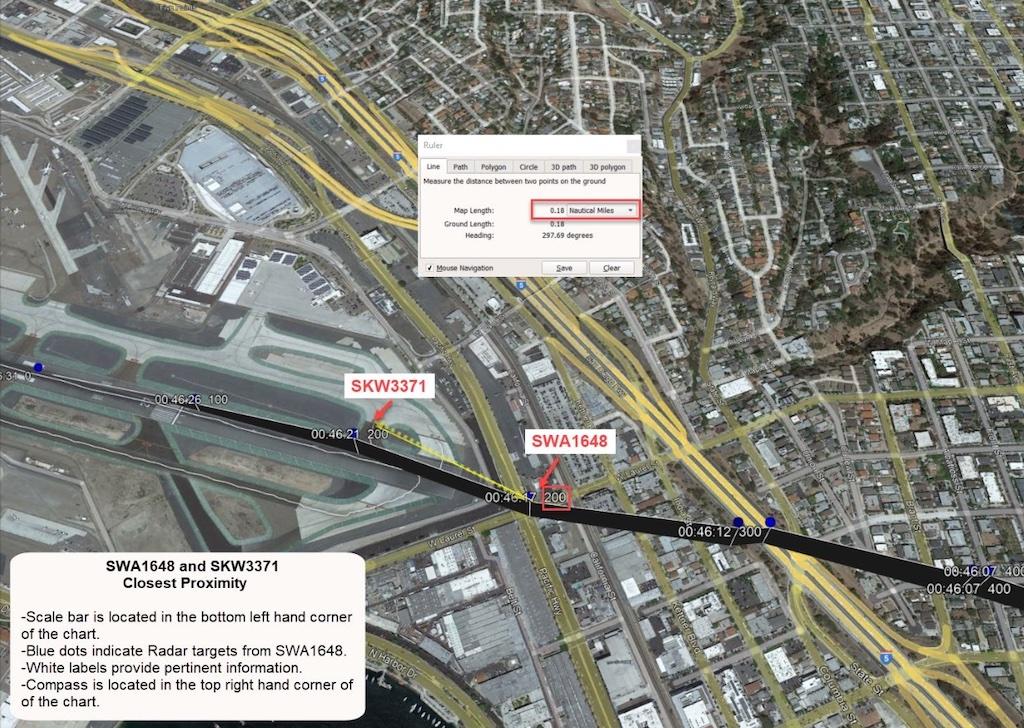
Closest proximity of the Southwest and SkyWest flights at San Diego International Airport.
There’s a lot of concern about runway incursions at the FAA and in the media right now. The FAA cited six serious incidents that have recently occurred when it issued Safety Alert for Operators (SAFO) 23002 in March. The agency urged everyone to be extra vigilant. Both the FAA and the NTSB picked up the megaphone to emphasize the increased peril using calls to action, a Safety Summit and roundtable discussion.
While these efforts are expected from officialdom and well-intended, I suspect that such calls for more care from pilots and controllers miss the mark with their intended audience. Pilots and controllers are already some of the most conscientious professionals in the world. What the folks in the cockpits and the towers would really like to see is some concrete improvements in their tools, their staffing and their work environments.
One tool that would help to reduce runway incursions and improve other ATC-pilot communications in general is the anti-blocking circuit in ATC and aircraft radios.
The VHF radio frequencies commonly used in air traffic control don’t allow simultaneous transmissions. When a pilot or a controller presses his transmit button at the same time that another pilot or controller is already transmitting, one blocks the other. Sometimes there’s a squeal, sometimes garbling, sometimes one transmission overpowers the other, but generally the outcome is that the transmitted messages don’t get through. Pilots call this “stepping on” another’s radio call. Blocked transmissions have been around since the piston age, but nobody has been able to stop them.
Blocked radio transmissions have caused accidents, near-accidents, and runway incursions many times. A blocked transmission was causal in the infamous Tenerife accident between two Boeing 747s in 1977.
The latest runway incursion caused by a blocked transmission took place at San Diego International Airport on June 10, 2021. A tower controller left a SkyWest Embraer 170 flight sitting on the departure end of Runway 27 while an inbound Southwest Boeing 737 approached that runway. Realizing the developing conflict, she ordered the SkyWest aircraft to exit the runway and the Southwest 737 to go around.
The ATC audio captured the pilot of SWA1648 stating, “Ah,” followed by the tower controller stating, “Southwest sixteen forty-eight go around.” Immediately after the controller unkeyed the transmission, the Southwest pilot stated, “Southwest sixteen forty-eight.” On another recording made by a commercial source, the pilot of the Southwest flight was heard saying, “Ah, is that an airplane on the runway, for Southwest sixteen forty-eight.” The pilot’s question blocked the controller’s go-around command.
The Southwest was .84 nm from the end of Runway 27 when the controller and the pilot blocked each other on the frequency. Because the Southwest crew did not hear the go-around order, they continued to the runway and landed. The closest proximity between the two airplanes was 0.18 mi. laterally and 200 ft. vertically.
The idea for an anti-blocking circuit in aviation radios has been around for a long time. Testifying before the House Aviation Subcommittee in 2001, retired American Airlines Capt. John Rutty said: “An anti-blocking circuit can prevent a pilot from stepping on an ongoing voice transmission, allowing the other transmission to be completed, uninterrupted. The valid signal in the receiver is sensed and the switch or transfer from receive to transmit is inhibited. The pilot hears an audible beep, which tells him he is not transmitting and, by remaining in the receiver mode, the pilot for sure hears the incoming message, which otherwise would have been blocked.”
Rutty went on to suggest starting with just controllers’ radios. An alerting beep on the controller’s radio would let he or she know the information was not being received by at least one aircraft on the same frequency. “This is suggested only for the controllers’ radios as a step that can be done immediately since there would be no rule change required,” Rutty said.
Even though an influential congressman and the president of the Air Line Pilots Association were behind the anti-blocking circuit technology, it wasn’t implemented.
In considering why such a simple safety tool has been overlooked for so long, I recalled some simple verities I’ve heard about aviation. “There are two kinds of people, ground and air. The ground crowd designs, constructs, dispatches, maintains and otherwise controls and regulates flying. They wield the clout because they control the money and write the rules.” These words were spoken by Len Morgan, a Braniff captain I had the pleasure of flying with in the late 70s.
Len went on to explain that people on the ground have their own goals and pressures. Few can grasp the total picture as seen from the air. It’s up to us, he said, to better communicate what we know is wrong with the system.
Too many people on the ground seem to have myopia on the topic of anti-blocking circuits. Nobody wants to be the first to make the small investment that could prevent a catastrophic collision. It’s too easy to blame the few pilots and controllers that err and just urge us all to be more vigilant.
Instead of “calls to action,” I’d like to see some real action. Get anti-blocking circuits installed in ATC facilities and airplanes, and we won’t have to say “stepped on” again.





